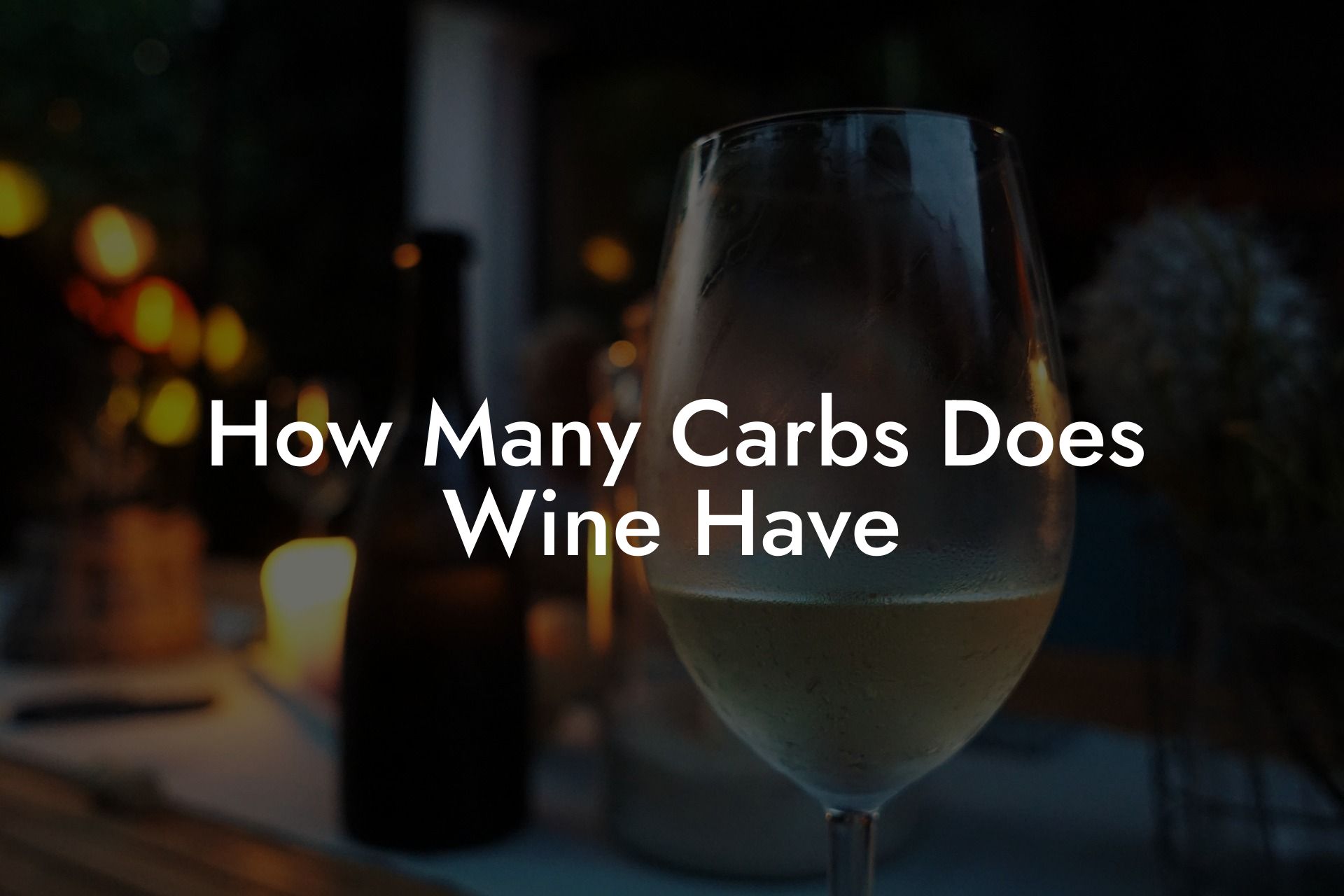Are you a wine lover wondering about the carb content in your favorite drink? Look no further! We're spilling the details on carbs in wine so you can sip without the guilt. A perfect fit for cool creatives like you, join Black Wine Club as we take a deep dive into the wonderful world of wine and its carbs!
How Many Carbs Does Wine Have Table of Contents
Carbohydrates: A Brief Overview
Carbohydrates: A Brief Overview
Carbs are the primary source of energy for our bodies, often broken down into simple sugars like glucose. They can be classified into two categories: simple and complex carbohydrates. Simple carbs consist of sugars that are easily digested, while complex carbs are broken down more slowly, providing a more sustained energy source.
Carbs in Wine: A Quick Summary
Wine is made by fermenting grape juice; the sugar content in grapes converts to alcohol during this process, creating a lower carb beverage. Generally, the residual sugar in the wine determines its carb content, with dry wines containing less than sweet versions. For comparison, a standard 5-ounce glass of dry wine has around 3–4 grams of carbs, while a sweet wine can contain 8 grams or more.
Do You Want to Win a Free Bottle of Wine?
Don't miss out on the opportunity to win a free bottle of wine every week.
Enter our weekly prize draw today!
Carb Count in Popular Wine Types
- Red Wine: Red wines typically have around 3–4 grams of carbs per 5-ounce glass. Examples of low-carb reds include Cabernet Sauvignon, Pinot Noir, Merlot, and Syrah.
- White Wine: White wines generally contain 3–5 grams of carbs per glass, with some exceptions. Chardonnay, Sauvignon Blanc, and Pinot Grigio usually fall on the lower end of the carb range, while Riesling and Moscato can be higher.
- Rosé Wine: Rosés contain about 4–6 grams of carbs per glass, with drier styles boasting lower carb counts than their sweeter counterparts.
- Sparkling Wine: Bubbly varieties like Champagne, Prosecco, and Cava can vary significantly in carb content based on how they're made and their sugar levels, ranging from 2–6 grams per glass.
Tips for Choosing Lower Carb Wine Options
- Opt for Dry Over Sweet: Dry wines contain less residual sugar and therefore fewer carbs. Aim for wines with an alcohol by volume (ABV) of 12% or higher, which indicates lower sugar content.
- Check the Label: Many wine labels provide details on sugar content and classification, like "brut nature" (very dry) for sparkling wines.
- Ask for Advice: Don't hesitate to ask your server, sommelier, or wine merchant for their recommendations on lower carb wines!
How Many Carbs Does Wine Have Example:
Imagine you're out for a night with friends, and your group decides to order wine. You're mindful of your carb intake and want to make a smart choice. Noticing the menu features a Sauvignon Blanc (a dry white wine) with an ABV of 13%, you confidently order a glass, knowing it aligns with your low carb goals. Cheers!
Now that you've become a carb-savvy wine connoisseur, you're ready to make informed decisions while maintaining your love for the grape. Be sure to share this article with your fellow wine enthusiasts and continue exploring the wealth of information Black Wine Club has to offer. Don't forget to share your wine-drinking experiences with us – we love hearing from our fellow cool creatives! Happy sipping!
Do You Want to Win a Free Bottle of Wine?
Don't miss out on the opportunity to win a free bottle of wine every week.
Enter our weekly prize draw today!












